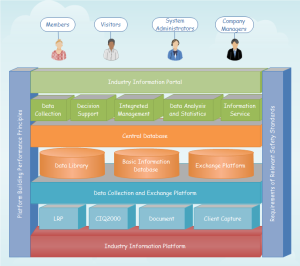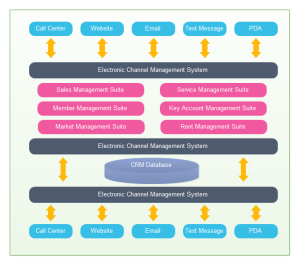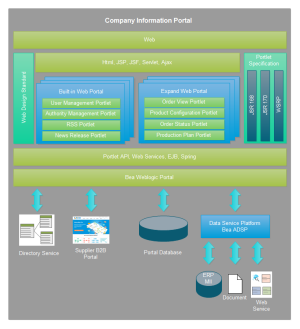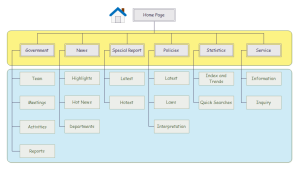Software Architecture Diagram
Mục lục bài viết
1: What is Software Architecture?
The software architecture of a system shows the system’s organization or structure and explains the expected behavior. The software architecture supports and provides a sturdy foundation on which software can be built.
A software structure introduces a process and foundation that supports a series of architecture decisions and trade-offs. These decisions include security, performance, and manageability. These decisions ultimately impact application quality, maintenance, performance, and overall success. Common problems and long-term consequences have the power to put your system at risk.
Architectural styles are high-level architecture patterns and principles that are commonly used in modern systems. Software architecture makes use of a combination of architectural styles to form a plan.
Software architecture is usually designed into four layers (some also make it three), which are, from top to bottom, presentation layer, service layer, business layer, and data layer.
- Presentation Layer contains components for users to interact with the application. It is responsible of processing user’s input and returning the correct response back to the user.
- Service Layer acts as a transaction boundary and contains both application and infrastructure services.
- Business Layer includes the core business functionality of the application.
- Data Layer is the lowest layer of an application. It is responsible of communicating with the used data storage.

2: Difference between Software Architecture and Software Design
The difference between software architecture is a blurry line. Both of these concepts support each other, while they have some significant differences as well.
- Software design encompasses the design of individual modules or components, while software architecture encompasses the complete architecture of the overall system.
- Software design defines the detailed properties particular to the system, while software architecture defines the fundamental properties.
- Software design refers to creating a requirement specification of software that helps developers implement the software. In contrast, architecture refers to the process of creating a high-level structure of a complete software system.
- Software design makes a foundation for software implementation, while architecture defines the high-level infrastructure of the software.
- Generally, in waterfall models, software design is the initial phase, while software architecture is a plan which constrains software design to avoid typical mistakes and achieve the goals.
- Software architecture patterns are microservice, serverless, and event-driven, while software design patterns are creational, structural, and behavioral.
- Software design focuses on implementation, while software architecture focuses on structure.
Software architecture provides a foundation for managing the complexity of the system. It is used to coordinate different components of the system and allows tracking during the development process and the phases after it. In addition, it helps to ensure that software meets all requirements and quality attributes, including security and performance goals.
Software architecture covers the essential elements supporting the system, including structural elements and the behavior and collaboration of these elements. In contrast, the software design acts as a blueprint only during the development process and guides specific phases and tasks, including coding, integration, testing, and integrating. It also helps to identify the system requirements and set expectations within the entire team.
3: Relationship between Software Architecture and Software Design
Software architecture and design do the same things, though software architecture covers the whole system while the plan covers the implementation phase mainly. Software architecture works on the structure of a system without the implementation details. Architecture also suggests and tracks how the elements and components within a system interact with one another. Software design works more profound into the implementation details of the system. Design deals with the selection of data structures and algorithms and also the implementation details of individual components.
Architecture and design concerns often overlap during the project lifecycle. Sometimes, the decisions are more architectural, while other times, the findings focus on design and how it helps achieve that architecture.
Another way of stating this is that architecture is design, but not all design is architectural. The latest trends in software architecture assume that the design evolves and design generally evolves during the implementation stages of the system. Thus, the software architect continuously observes and tests the format against real-world requirements.
4: Purpose and benefit
- Software architecture creates a firm foundation for the software project lifecycle that makes the project and platform more scalable.
- A well-structured software architecture increases the platform’s performance by reducing costs and optimum use of all types of resources.
- Studying architecture is an effective way to assess the organization’s requirements. Software architecture provides the big picture.
- Since software architecture covers the complete project lifecycle, it can identify areas for potential cost savings. For instance, the architecture may suggest that multiple database systems may transfer to a single system to reduce software acquisition and support costs.
- The software architecture supports the reuse of valuable assets. Reusable assets can reduce the overall cost of a system and also improve its quality.
- It provides better code maintainability, quicker changes in IT Systems, and increased quality of the platform.
- Software architecture helps manage complexity and risk management. It helps to reduce risks and the chance of failure.
- It also creates a clear separation of concerns to support higher adaptability.
- Software architecture reduces development time.
- Software architecture facilitates communication with all stakeholders. Communicating about complex systems helps the stakeholders understand the consequences of the requirements and make the design decisions.
5: How to make a Software Architecture in EdrawMax?
EdrawMax is a leading drawing software for several sorts of diagrams. It has a wide range of pre-drafted templates and symbol libraries that support quick and accurate charts. Here are the steps to create a software architecture in EdrawMax.
Step 1: Launch the EdrawMax Software
Step 2: On the navigation pane on the left, go to Software development>Software Architecture and wait for the templates to load. Then, choose a free template or click the + tile to create the diagram from scratch.

Step 3: Select a template, a pre-drafted diagram will appear on the canvas, and you can modify it according to your requirements.

Step 4: To create the software architecture from scratch, you can use the symbol library for symbols, drawing, and other visual tools.

Step 5: Once done, save your File, and you also have options to export it to many other formats, e.g., Excel, Word, or PDF. Click on the File tab and then go to Export.

6: Examples of Software Architecture

This example of the software architecture of a banking system covers databases, website servers, and bank servers, including all other system use cases and conditions. This system also shows the decision nodes and branches based on the condition answer. The actors are also demonstrated as external factors. This structure contains software elements and the relationship between the components.
More architecture diagram templates are prepared here, allowing users to choose and download. All files are in vector format, easy to edit and customize.
Website System Architecture Diagram

Anyone need this 3D website system architecture diagram can click the picture and get the download link.
CRM Application Architecture Diagram

This CRM application architecture diagram is allowed to download and modify. You can change its style with only one click.
Web Portal Architecture Diagram

Starting from an existing template is the most time-saving way when creating a similar style architecture diagram. Click the picture to get access to the download link.
Website Information Architecture Diagram

This website information architecture diagram on the right can be downloaded and modified for your own use.











